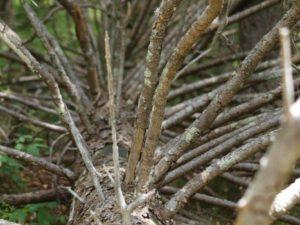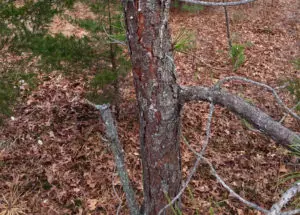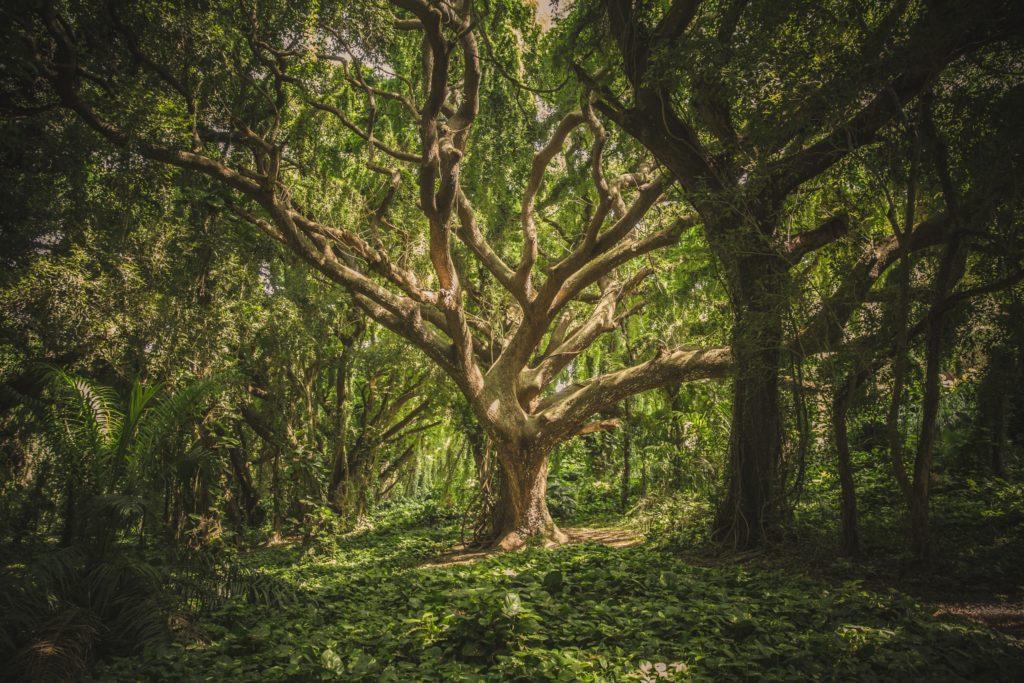Trees have evolved to be hardy plants that can thrive for hundreds of years, but they are still vulnerable to the forces of nature. Strong winds and the accumulation of snow and ice can damage large limbs, but over time they can take the entire tree down. On top of the physical damage to or loss of the tree, weakened and broken trees can pose a high risk to people and property.
While certain species can be susceptible, what makes a tree on your property vulnerable is its history, age, the effects of pruning, and any changes to its environment.
Trees With Damaged Or Restricted Roots
The roots of trees can grow out to be twice the radius of the canopy, but this doesn’t stop much construction work around them. But the roots aren’t just for taking nutrients out of the soil: they give a tree the anchorage it needs to stay stable and upright. The large structural roots and the hair-like absorbing roots work together to create a strong anchor that can withstand the sideways forces of wind.
give a tree the anchorage it needs to stay stable and upright. The large structural roots and the hair-like absorbing roots work together to create a strong anchor that can withstand the sideways forces of wind.
In many urban areas, builders and encroachment from construction can damage or restrict roots, even leaving them susceptible to disease. When the man-made work weakens the root system, a tree is more likely to lean and fall in a storm.
Tall Trees And Windthrow
The taller the tree, the greater the risk of a problem called “windthrow,” a term that describes when strong winds fully uproot trees. The combination of tall trunks and full foliage turns the tree into a kind of lever, and when high winds batter the upper part of the tree and apply significant force to the lower trunk and roots, it can tear the whole root system right out of the ground (even if the roots are healthy!). Many slender coniferous trees like cedar, white spruce, pines, and older willows are highly susceptible to this type of damage during a storm.
Trees With Uneven Canopies
 Amateur pruning or growth without pruning can leave a canopy and crown (the trunk and branches that make up the top part of the tree) to grow unevenly. Uneven parts can give the tree an irregular appearance, but when faced with high winds, it can lead to a problem called “crown twisting.”
Amateur pruning or growth without pruning can leave a canopy and crown (the trunk and branches that make up the top part of the tree) to grow unevenly. Uneven parts can give the tree an irregular appearance, but when faced with high winds, it can lead to a problem called “crown twisting.”
Uneven wind loading on the lopsided crown produces a damaging twist on branches and the stem. This twisting causes torsional stress, much like twisting a rope backwards, resulting in splits and cracking. This is damaging around old wounds or other defects, which can lead to failure. A close investigation is necessary to spot these often-subtle cracks. An arborist can mitigate this damage in branches, but they have to be careful around damaged trunks.
What Can We Do To Protect Vulnerable Trees?
A certified arborist can evaluate and take corrective action to protect a tree or any property close to it. We’d look at the tree from top to bottom,
checking for the common signs of vulnerability. These include:
- Brown leaves or dead branches in the crown of the tree
- Wounds caused by a previous loss of limbs
- Leaning or poor weight distribution
- Trunk splits or multiple trunks
- The effects of construction work near trees, including driveways, landscaping, walkways, and utility lines
If you notice any of these problems, get in touch with us today – we can diagnose and treat the tree before the next storm hits!

